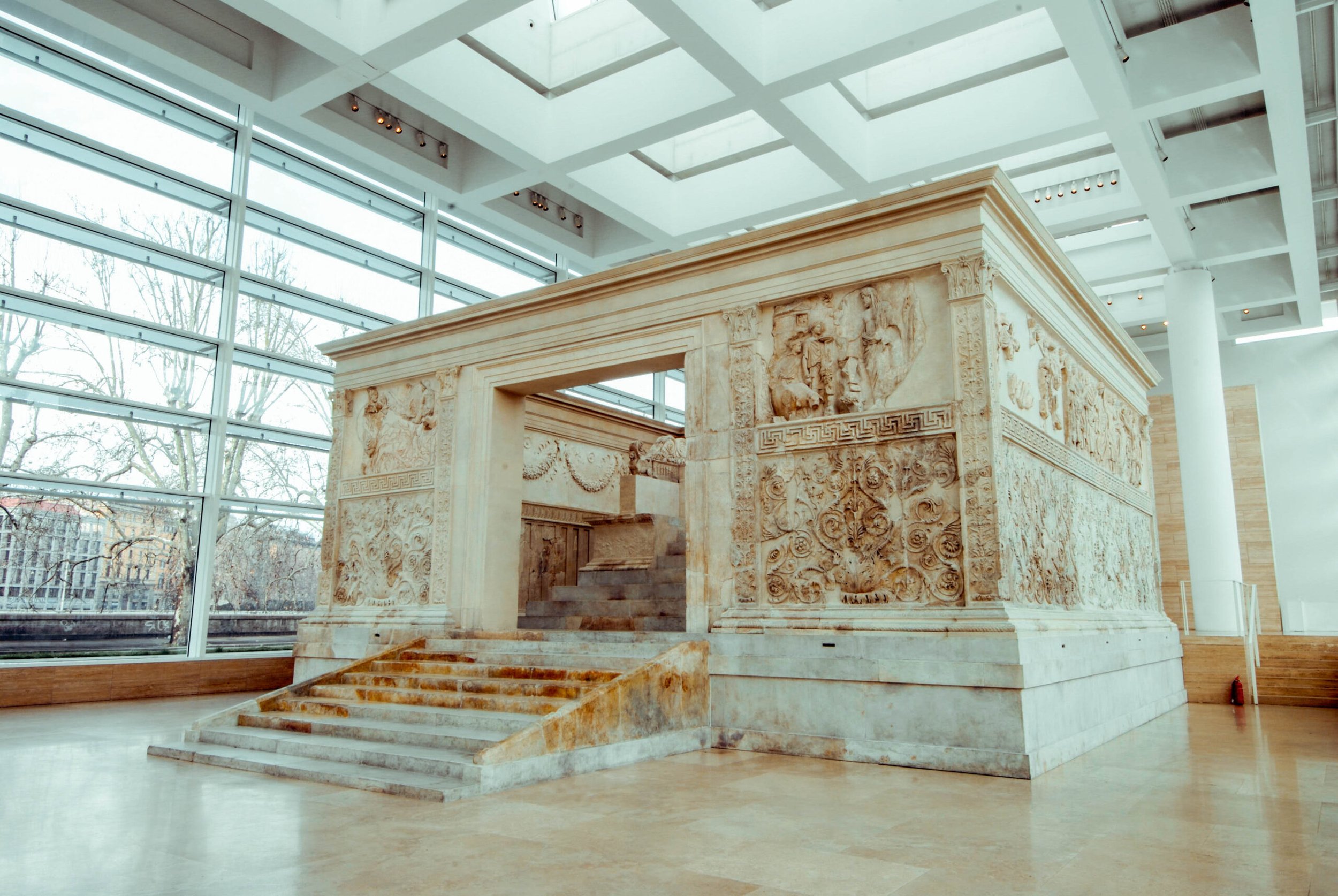ART AND ARCHITECTURE
Fascinating architecture, beautiful art and the rich history of Rome.



-

Villa Medici
The history of Villa Medici has its roots in the republican age of Rome when the Pincio hill on which it is located today housed the residence and gardens of the Roman tribune Lucullus, the so-called Horti Luculliani, the scene of luxurious parties that have become proverbial. Cardinal de' Medici turned the villa into one of the most elegant and fashionable places during the Renaissance in Rome. It is interesting to note that from the second half of the nineteenth century, while modern artistic currents spread in France and the rest of Europe from Realism, through Impressionism, to the avant-gardes of the early twentieth century being linked to the Academy of Fine Arts in Paris, Villa Medici remained substantially linked to academic art.
-

Porta Pia
Porta Pia is a gate in the defensive walls of the so-called Aurelian Walls. Located close to the modern Nomentano district, it was commissioned by Pope Pius IV Medici in the sixteenth century, hence the name “Porta Pia”. The gate replaced the ancient Porta Nomentana and served as a scenic backdrop for Strada Pia, the ancient Via Alta Semita, which joined the suburban villas located north of the city with the Quirinal Hill. The distinctive architectural design of Porta Pia witnesses the moment of transition between the classical tendencies of the late Renaissance and the new aspirations of the Baroque. In fact, it was one of Michelangelo's last extraordinary architectural projects. Porta Pia is best known for a military event, known as the Capture of Rome, that took place during the Risorgimento. on September 20, 1870, the stretch of wall adjacent to the gate was the scene of a battle between the troops of the Kingdom of Italy and those of the Papal States. The battle resulted in the annexation of Rome to the Kingdom of Italy.
-

Piazza Navona
In the heart of the Campo Marzio, the area of Rome Rome which in ancient times was dedicated to the god Mars, there is one of the most evocative squares of the city. In the square, there are masterpieces that have left a mark on the history of architecture, such as the Fountain of the Four Rivers and the Church of Sant'Agnese in Agone. Most of the monuments in the square date back to the sixteenth and the seventeenth centuries and *walking there is like taking a step back in time and being transported to the period when the Baroque style flourished in Rome. In the mid-1500s Gregory XIII Boncompagni ordered the construction of multiple fountains and drinking troughs and, in 1575, the Fountain of the Moor and the Fountain of Neptune were built. Their polylobate basins were designed by Giacomo della Porta, but they underwent numerous renovations over the centuries. In 1653, the restoration of the Fountain of the Moor was commissioned to Gian Lorenzo Bernini by Pope Innocent X Pamphilj; the Pope had had a palace built in the square and wanted to admire the fountain from its windows.
-

Barcaccia fountain in Piazza di Spagna
The famous Barcaccia fountain, located in the Campo Marzio district, stands in the center of the square where there is the equally famous staircase called “ Spanish Steps”. Today the fountain represents the fulcrum of the square and it is the meeting point for those who want to walk along and get lost in the streets of the city centre of Rome. The project for the construction of the fountain dates back to the seventeenth century. Pope Urban VIII commissioned Bernini to build the fountain that would later become one of the most famous symbols of Rome. At the time, the church of the Trinita' dei Monti was not yet connected to the square by the famous staircase, it rather appeared to be an architectural mistake as it was standing at the edge of the slope. The Barcaccia fountain was the first fountain to be conceived as a completely sculptural work. The fountain is a well-known symbol of Rome; it represents both functionality in terms of water at the service of the city and iconography in architectural and sculptural terms.
-

Santa Maria Maggiore Basilica
The basilica stands on the Esquiline Hill and is ideally connected through Via Merulana to another stronghold among the Roman basilicas: the Basilica of San Giovanni in Laterano. The reason why the church was built in this area is unknown. However, according to a legend, an unusual snowfall in August whitened the hill, and Pope Liberius, inspired by a dream in which he had seen the Madonna, decided to have a church built there, which he dedicated to Our Lady. The church is mentioned in the Liber Pontificalis (Book on the Lives of the Popes), which reports that the church was built near the Macellum Libiae, a large market of the imperial age named after the wife of Augustus. The mosaic decorations that enrich the naves and the apse of the church are masterpieces of art.
-

Ara Pacis and the Teca of Meier
In the period between 1996 and 2006, the museum was redesigned by the American architect Richard Meier, and the old pavilion which had been built by architect Morpurgo (1938) was replaced. The museum is characterized by large windows alternated with blocks of travertine and is elevated recalling the structure of the Altar itself. The structure was commissioned in 13 BC to commemorate Augustus’s return from the provinces of Gaul. The altar was dedicated to emperor Augustus on January 30, 9 B.C.. Emperor Augustus wanted it to be built in the Campus Martius near his Mausoleum and the Horologium Augusti, the largest sundial in the ancient world made with a large Egyptian obelisk in red granite, whose shadow reached the main door of the Ara Pacis on 23 September . This day corresponded not only to the Autumnal Equinox but above all to the emperor's birthday.
